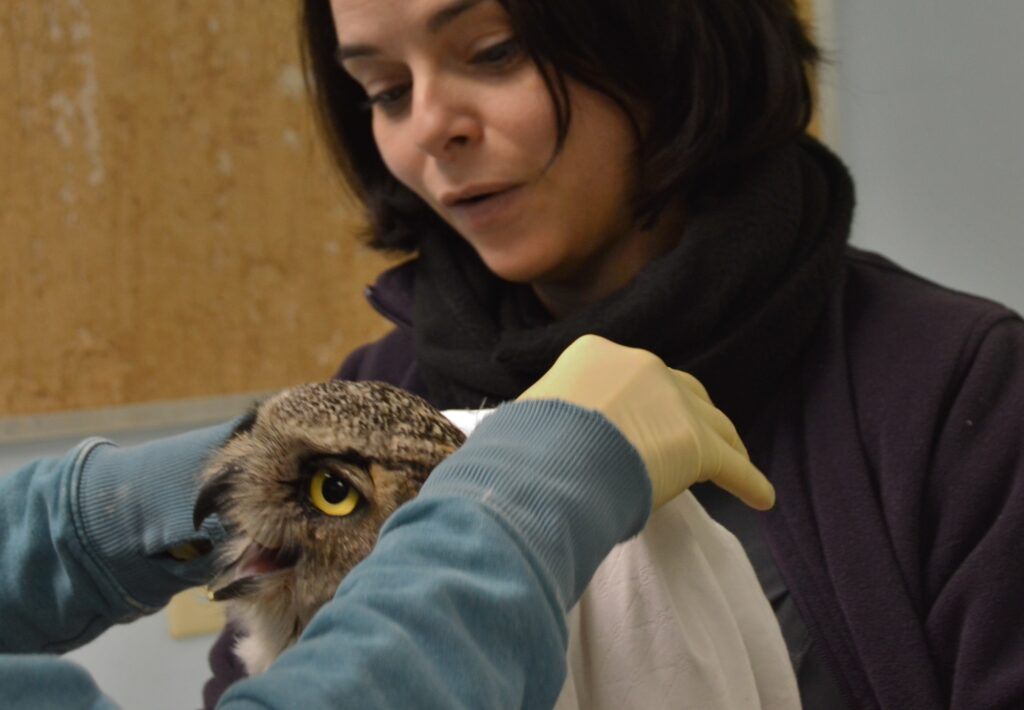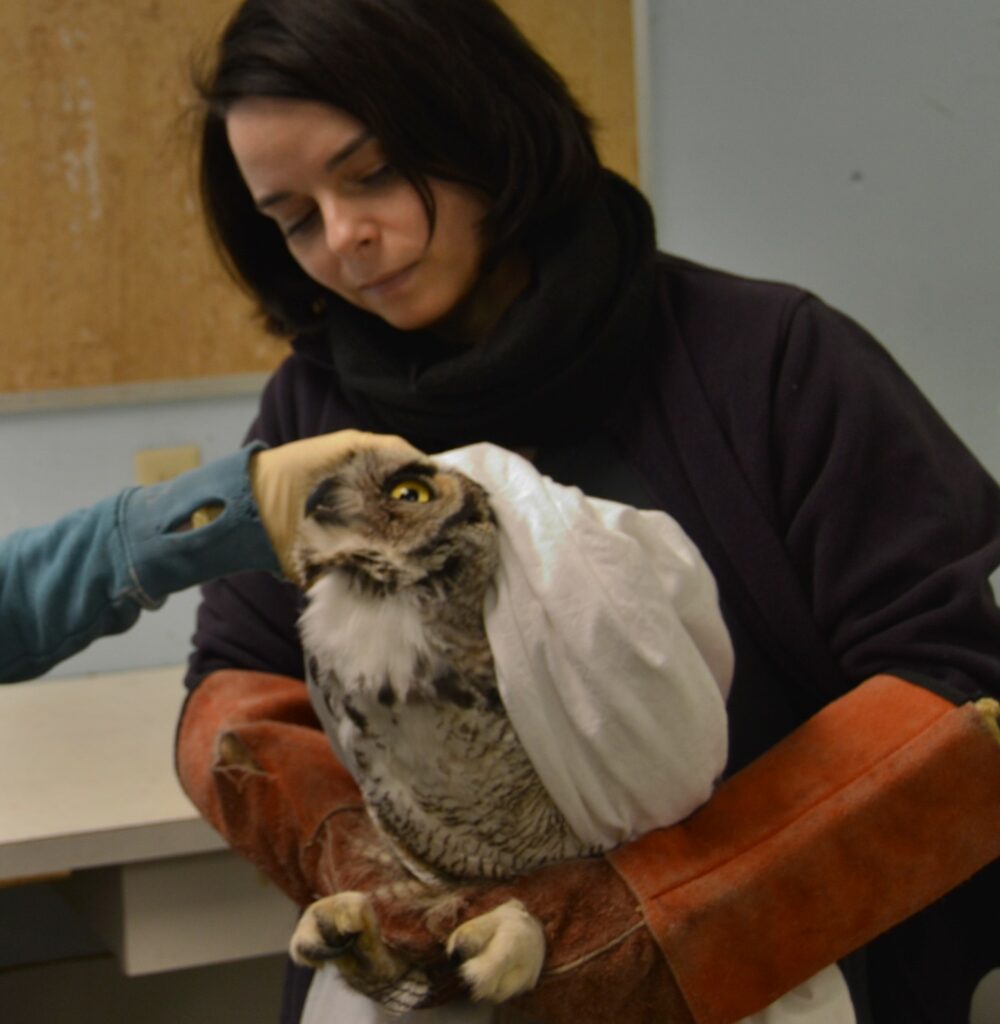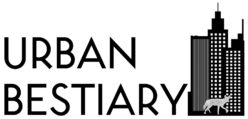
There are four owl patients at the TWC right now. Two Great Horned owls, one gorgeous Snowy owl that everyone is excited about, and an amazing little Saw-Whet owl. The room that has been the squirrel nursery, ever since I first started there, is now an owl care room.
This week’s shift at the TWC was full of delights. I was able to hold a fox for treatment, and a wounded and frostbitten pigeon to be tube fed. Was hissed at by a racoon in an outside enclosure (as I was standing on a ladder to remove his fleecy blanket and replace it with a warm thick duvet on his high-up platform). Had a meaningful moment with Hot Dog the snapping turtle. And was happy to feed a room full of opossums in different enclosures and take care of the sweet little bats.
A highlight of the day was holding a Great Horned owl.
The snowy owl that is in TWC’s care was scheduled to be fed and given medication at 5pm. I joined J and CA, intending to observe. Really, just to get a look at this beautiful snowy owl that everyone is enamoured with. L, the TWC assistant volunteer coordinator was there, too, to take some official photos.
As J and CA were about to move the snowy owl out of its enclosure, they realized that its wing bandage had come off. A senior staff person needed to come and replace it before they could move it to give it food and medication.
CA decided feed and give meds to the other owl in the room in the meantime. I’m glad I was there with thick gloves on! J generously suggested that I hold the Great Horned owl while he waited to do the snowy owl. Super awesome of him, since he was lined up to do both.
So CA removed the Great Horned owl from his enclosure, and passed him over to me. The key to holding an owl and other birds of prey is to ensure that their very strong, sharp talons are held securely and pointed away from anyone, so no one gets hurt.
You hold their legs with your hands (in very thick protective gloves) and use your thumbs to point their talons downward. Your arms help to hold the owl against your chest, facing outward.

This owl came in with wounds and one blind eye. One eye is completely black and the other has the usual bright orange iris around the black pupil. The great horned owl has the biggest eyes of all North American birds, even though its body size is smaller than a snowy owl, the largest owl species.
I was able to hold the owl against my chest, talons secure, as he was given medications. He was very calm until it came time to go back into his enclosure. Then he got restless and wanted to jump back in. All good.
Great horned owls are common, year-round residents with a relatively small home range, and apparently are one of the most aggressive owls in North America. Their call is unique and has earned them the name hoot-owl. Whereas other own have a softer hooo hooo sound. Each owl has its own voice and a range of sounds, including shrieks, whistles, hisses, cries, coos, barks, and a stress-related beak-snap.
After I returned the Great Horned owl, I went to feed opossums until the Snowy Owl could be treated. By the time I was done and returned to the owl room, J and CA had finished the treatment and were returning the owl to its enclosure. I missed it!
A little later in the evening, I helped Ak, another volunteer, move a different Great Horned owl out of a room that needed to be set up for a new coyote patient. And we got a great example of needing to secure its claws right away.
This owl apparently has spinal damage and it seems possibly neurological damage. It was on the ground of its recovery room, looking up at us, when we opened the door. Ak captured it easily with the usual bedsheet method. But as she was trying to position the owl so she could properly secure its talons, it tried to hang on and secure itself – by grabbing her hand.
Thank goodness Ak was wearing thick protective gloves, but she could still feel it. Owl talons are super strong and shockingly sharp. In fact, thanks to their powerful legs and talons, great horned owls can exert 300 PSI (pound-force per square inch) of power. I removed the claws from Ak’s hand – not easily. And I removed them from where the sharp points had easily pierced through the sheet.
Ak was able to get a good hold on the owl. We then moved it to the new owl room and placed it into its new enclosure, Most owls would prefer to perch, but this one sort of fell slowly sideways off his perch – only about 4 or 5 inches from the floor of the enclosure that has been covered with two layers of a soft fuzzy blanket.
After the owl was moved, Ak and another volunteer cleaned the room and set up for the coyote. I took the tree branches that had been in the owl’s room and placed them in the recovery room of a gorgeous fox who tends to trash her space – the branches will smell like owl to her, and stimulate her foxy curiosity.
Warm thanks to Lauren Clift, Assistant Volunteer Coordinator at the Toronto Wildlife Centre for taking and sharing these photos.
